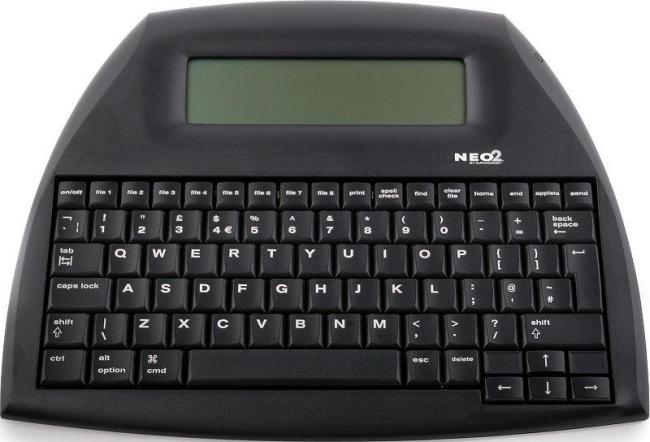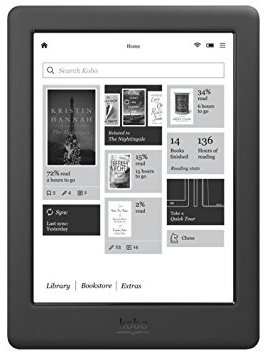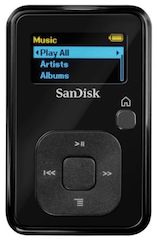Today, almost everyone has a smartphone. Smartphone apps provide purpose for our portable general-computing devices, and enable us to, well, do things on our phones. So we use them for everything. But not too long ago, we used dedicated devices to perform many of the tasks we do on our smartphones today.
Over the last decade, these single-purpose devices have fallen to the popularity of the general-purpose smartphone. Outside of handheld game systems, very few new portable dedicated devices are being designed today.
Although I think smartphones are excellent for a variety of reasons, I also think it is a shame that this sector of product design has been overshadowed. I miss dedicated devices, and there are some I still use to this day, some of my most cherished bits of tech. This is a love letter to dedicated devices.
Meet the Cast
This post will revolve around my three favorite devices: my AlphaSmart Neo 2, Kobo Glo HD, and Sansa Clip+. First I'll describe these devices from a technical standpoint, then I'll explain a few reasons why I love them. I believe my reasons are generalizable to dedicated devices as a whole.

Say hello to the AlphaSmart Neo 2. It is a portable word processor, capable of storing about 380KB of text across multiple files. Files are edited on the built-in screen using the built-in keyboard, and can be synced with a computer over USB. While editing, it has spell check, find/replace, and a character/word/paragraph/page counter. I wrote this blog post on it, as well as hundreds of pages worth of school papers and other documents in the past. It continues to bring me joy, and is one of my most cherished belongings.

This is the Kobo Glo HD. It is a 6-inch e-reader with 4GB of storage and a backlight. It can natively read EPUB, PDF, MOBI, TXT, HTML, RTF, CBZ, CBR, and various image formats, and it supports Adobe Digital Editions DRM content. It can be synced over Wifi or USB.

The Sansa Clip+ is a teeny little MP3 player plus AM/FM radio. It has 8GB of storage by default but this can be expanded with a microSD card. (I have a 64GB card in mine.) It sports a little OLED display, it charges through mini-USB, and it is virtually weightless.
There are many things I love about these devices, but in this post I will talk about their battery life, tactility, and openness.
#1: Battery Life
Dedicated devices are designed around one main function. As a result, they can be heavily optimized for this particular function. They only include the electronic parts that are strictly needed, and these parts are often designed specifically to work together with minimal power consumption. As a result, dedicated devices have significantly longer battery lives than their general-purpose cousins.
The leader of the pack here is the AlphaSmart Neo 2. Its batteries (3x AA) last 700 hours. (This is not a typo!) My Neo 2 has never died on me, and I ended up replacing the batteries out of fear of corrosion eventually.
My Clip+, running Rockbox (more on that later), recently received an update that doubled its battery life from about 15 hours to about 30.
And of course, the Kobo, being an e-reader, has a battery life that lasts several weeks of moderate use between charges.
#2: Tactility
One of the main innovations that made smartphones so generalizable is the use of a large touchscreen. This allows developers to create any virtual input device they need for their particular app, but it necessitates the loss of physical buttons.
I'm not here to say phones were better with buttons. On the contrary, I think smartphones have found a niche around their lack of tactility. But sometimes I want tactility and realism in my devices.
Here the Kobo takes the cake. It doesn't have buttons either, but its e-Ink screen gives it a level of form-function parity that my general-purpose OLED slab-like phone can never achieve. Using a Kobo feels like reading a book.
Similarly, typing on my Neo 2 feels like using a typewriter, albeit one with a backspace key, spell check, and several other digital niceties.
#3: Openness
From my experience, dedicated devices tend to use open standards. The user is given full control of these devices.
For example, all three devices mentioned lack proprietary connectors (using USB-B, micro-USB, and mini-USB respectively). The Clip+ and Kobo mount as USB filesystems, and the Neo 2 can imitate a USB keyboard and type out your document.
In the case of the Clip+, the open-source and community-maintained alternative firmware Rockbox is trivial to install. This increases the number of formats it can play, and has achieved better battery life than the native firmware!
As we move toward more and more "tamper-proof," priprietary, locked-down devices, having this kind of direct access feels like a breath of fresh air. Granted, some phones and other general-purpose devices are similarly hackable.
Despite the age of these devices (13 years, 2 years, and 8 years, respectively), they continue to bring me joy. They're fun to use, and I don't see myself giving them up. I'm guessing I'll be using them longer than I'll be using my smartphone.
I'll close this post with a question: reflect on the devices you've loved in your life. How many of them are older devices that did one thing, and did it well? Do you still use or miss some of these devices today?